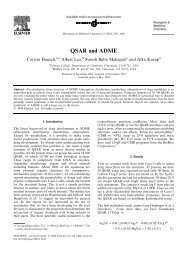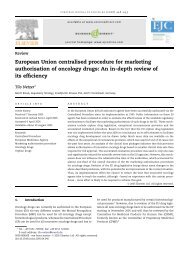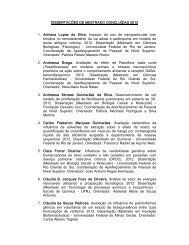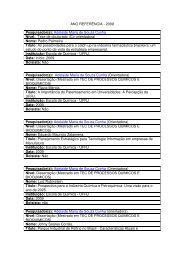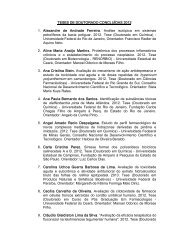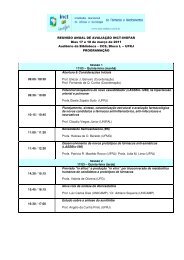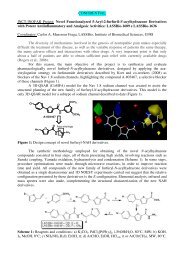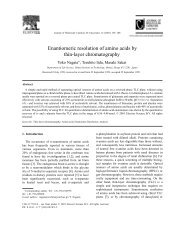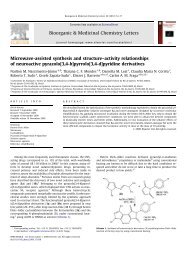Annual Activities Report 2011 - INCT-Inofar - UFRJ
Annual Activities Report 2011 - INCT-Inofar - UFRJ
Annual Activities Report 2011 - INCT-Inofar - UFRJ
Create successful ePaper yourself
Turn your PDF publications into a flip-book with our unique Google optimized e-Paper software.
<strong>Annual</strong> <strong>Report</strong> <strong>2011</strong> | <strong>INCT</strong>-INOFAR<br />
37<br />
Highlights<br />
HIGHLIGHTS<br />
The Methylation<br />
Effect in Medicinal<br />
Chemistry<br />
Eliezer J. Barreiro* Arthur E. Kümmerle and Carlos A. M.<br />
Fraga. Chemical Reviews 111 (<strong>2011</strong>) 5215-5246. DOI:<br />
10.1021/cr200060g<br />
In this review, we aimed to highlight the importance of the simple methyl group as a very useful structural<br />
modification in the rational design of bioactive compounds and drugs. The methyl effect, alter both<br />
biological phases of a drug, represented by its pharmacodynamics and pharmacokinetics profile, due to<br />
the modifications introduced in the stereoelectronic properties. The methyl group is very important in<br />
the molecular recognition of endogenous and exogenous organic compounds by bioreceptors. Although<br />
it only participates in London dispersion interactions, which are the weakest of all intermolecular<br />
interactions, 1 methyl groups have stereoelectronic effects 2 on micromolecules and biomacromolecules,<br />
thereby leading to diverse biological effects, including selectivity among bioreceptors, increased potency,<br />
and protection against enzyme metabolism. 3 Cognizant of the methyl group’s importance in molecular<br />
recognition, Wermuth wrote: 3 “The methyl group, so often considered as chemically inert, is able to alter<br />
deeply the pharmacological properties of a molecule.”<br />
The stereoelectronic changes promoted by methyl groups are directly involved in many biological process. 4<br />
For example, in pyrimidine bases described in Figure 1, one difference between DNA and RNA is the<br />
exchange of a thymine for a uracil, two pyrimidine bases that are differentiated by a methyl group at<br />
position 5 of the pyrimidine ring of thymine (Figure 1A).




